learning batik in borobudur
Photo Journal
September 2018
The process of coloring clothes using fabric dyes and wax can be traced back to Ancient Egypt and has been observed in various civilizations throughout the centuries. This millenary art, though, found its highest expression in the island of Java, Indonesia, where the intricately designed batik cloths are synonymous with culture and tradition.
It is precisely here, in Java, that we are introduced to this fascinating technique.
Lumbini Batik House is a studio and gallery opened by Rita and her husband in their home in Borobudur. Rita herself is the queen of batik, responsible for the workshops and classes, while her husband, a painter, is the mind behind the unique designs.
They welcome us with a big heartfelt smile and show us around the gallery and their lovely garden, naming each fruit, bark, and leaf they use to produce the natural tints. Then, chosen our favorite design, it's time to try our hand at batik making. Rita explains how to use the canting, the traditional tool for the application of melted wax, to retrace the pencil outline and make it dye-resistant.
Several mistakes after, the cloth is ready for dyeing: the parts covered in wax endure the original color, while the rest of the fabric turns a delicate indigo blue. Obviously, this process of waxing and dyeing can be repeated infinite times to create more and more elaborate and colorful patterns, akin to paintings, but this time we are pretty happy with our blue hankie and stop here.
Thank you, Rita, for the kindness, the patience, and the excellent batik class of course!
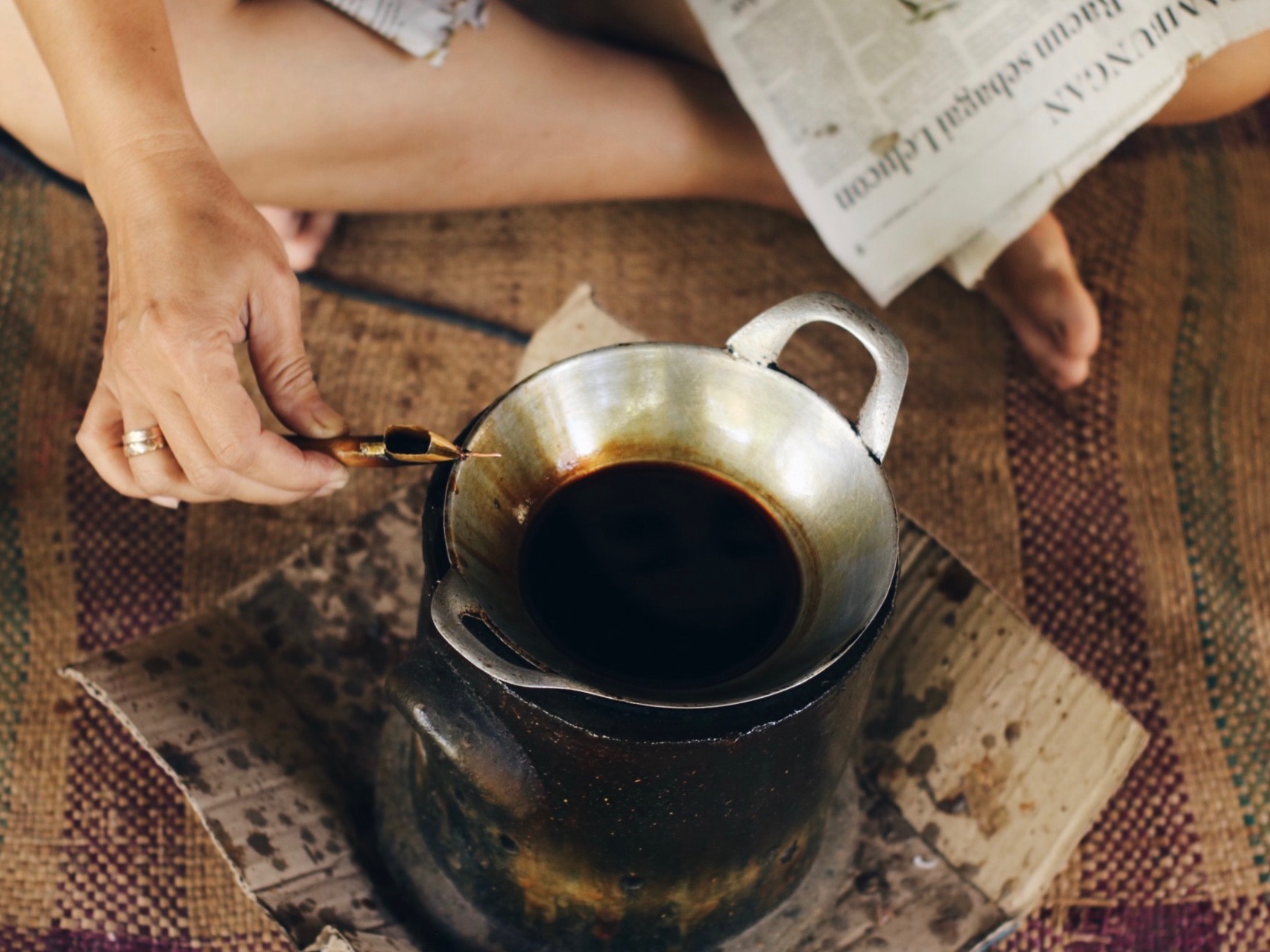
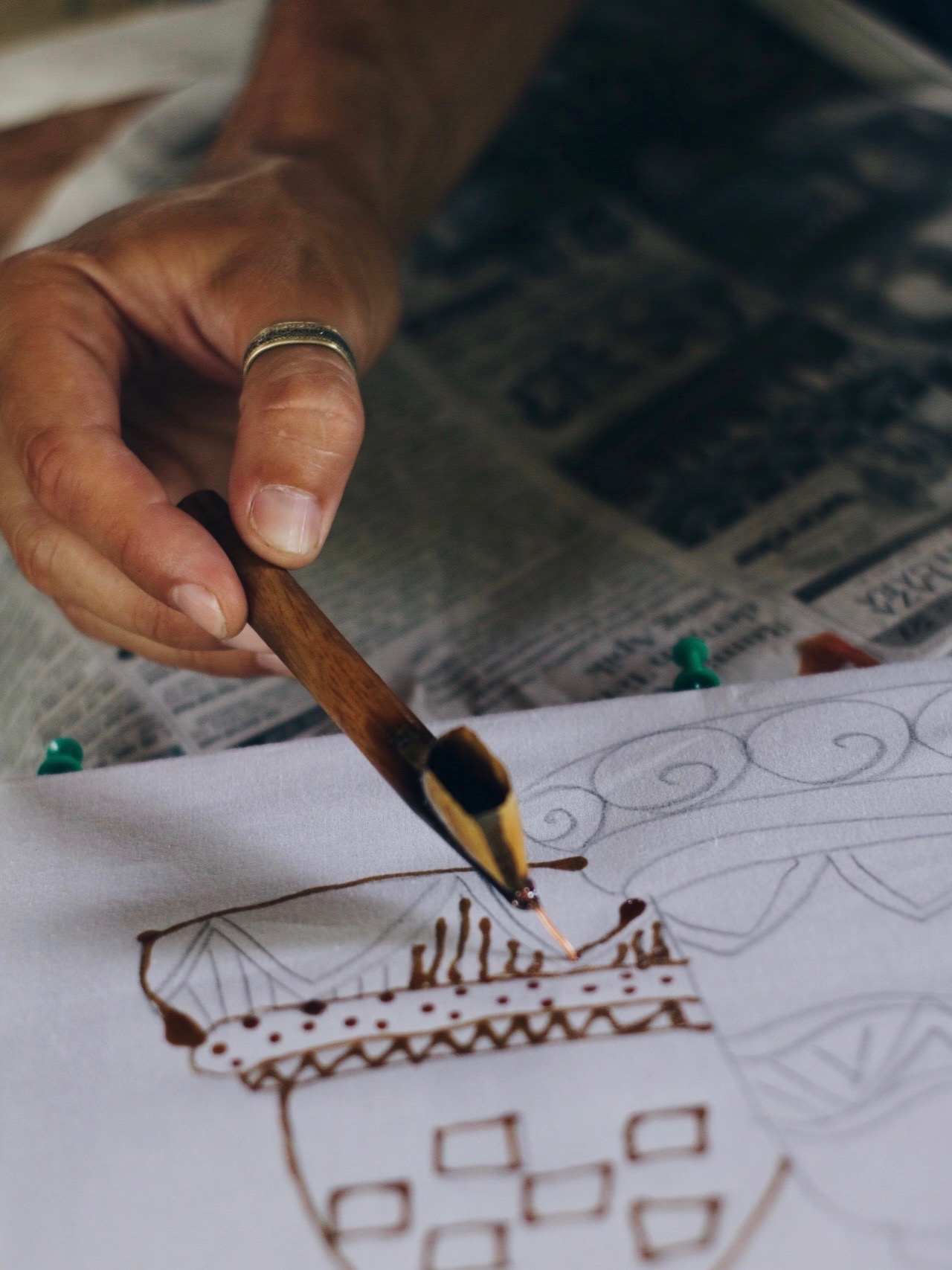
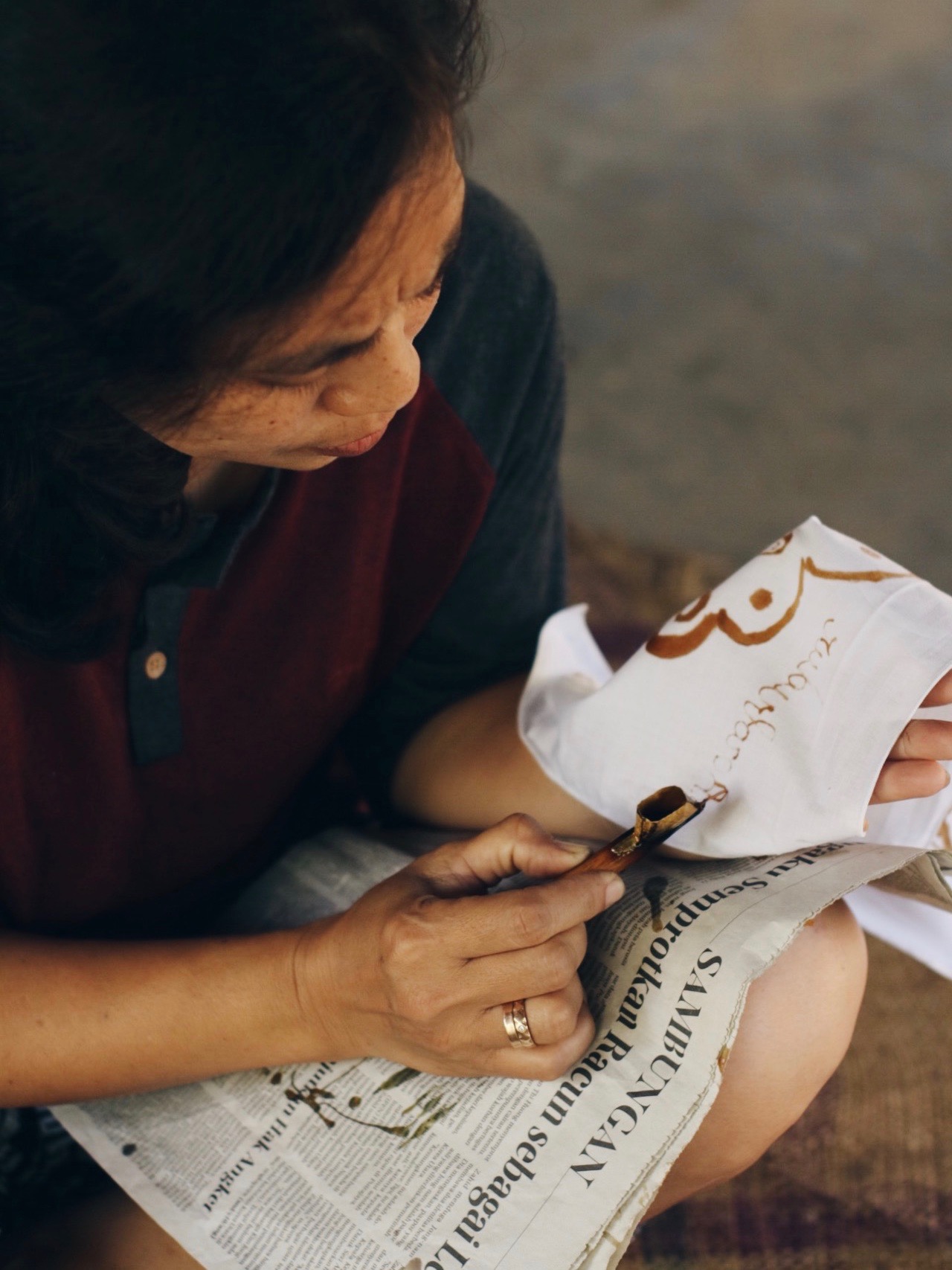
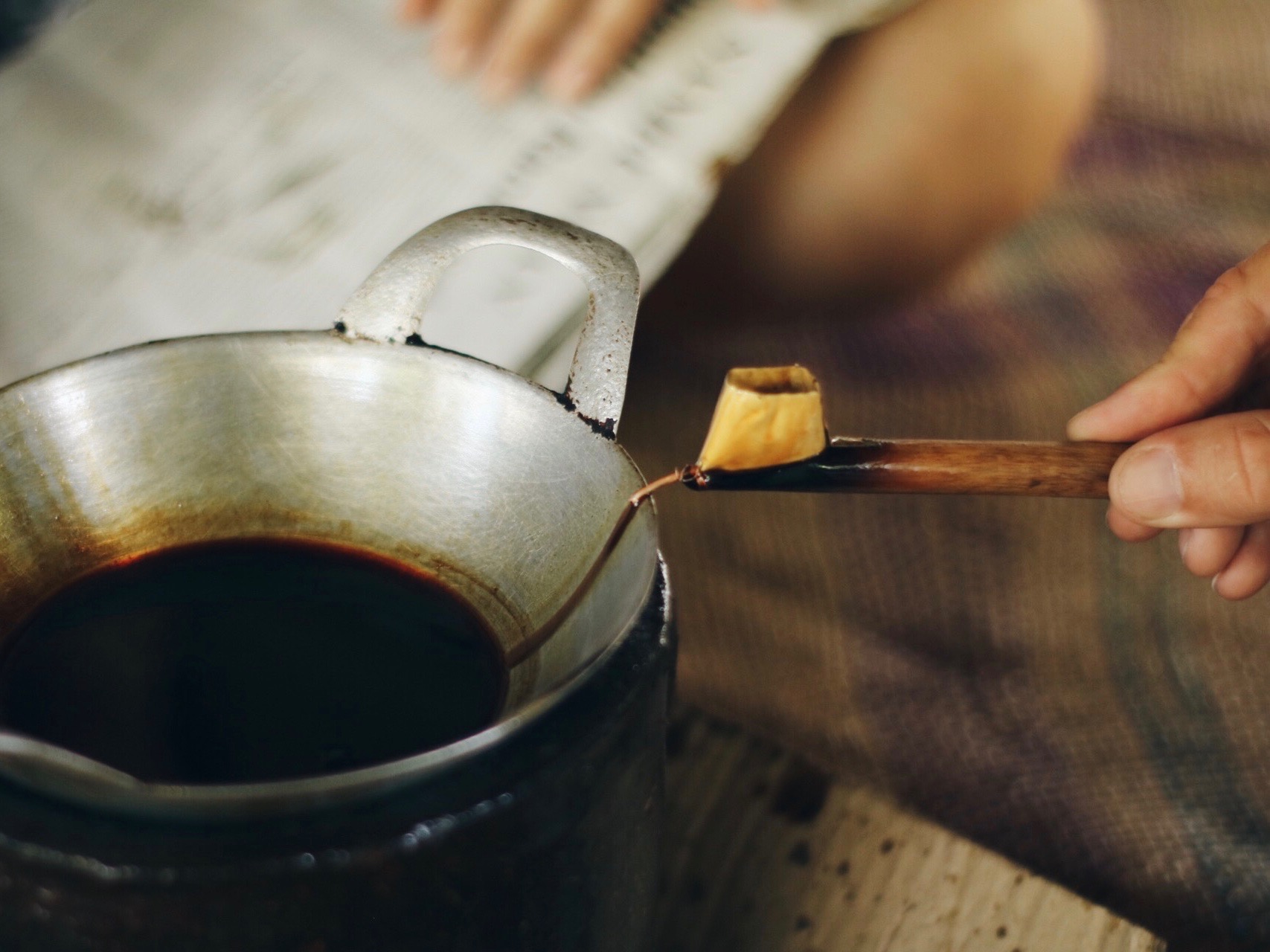
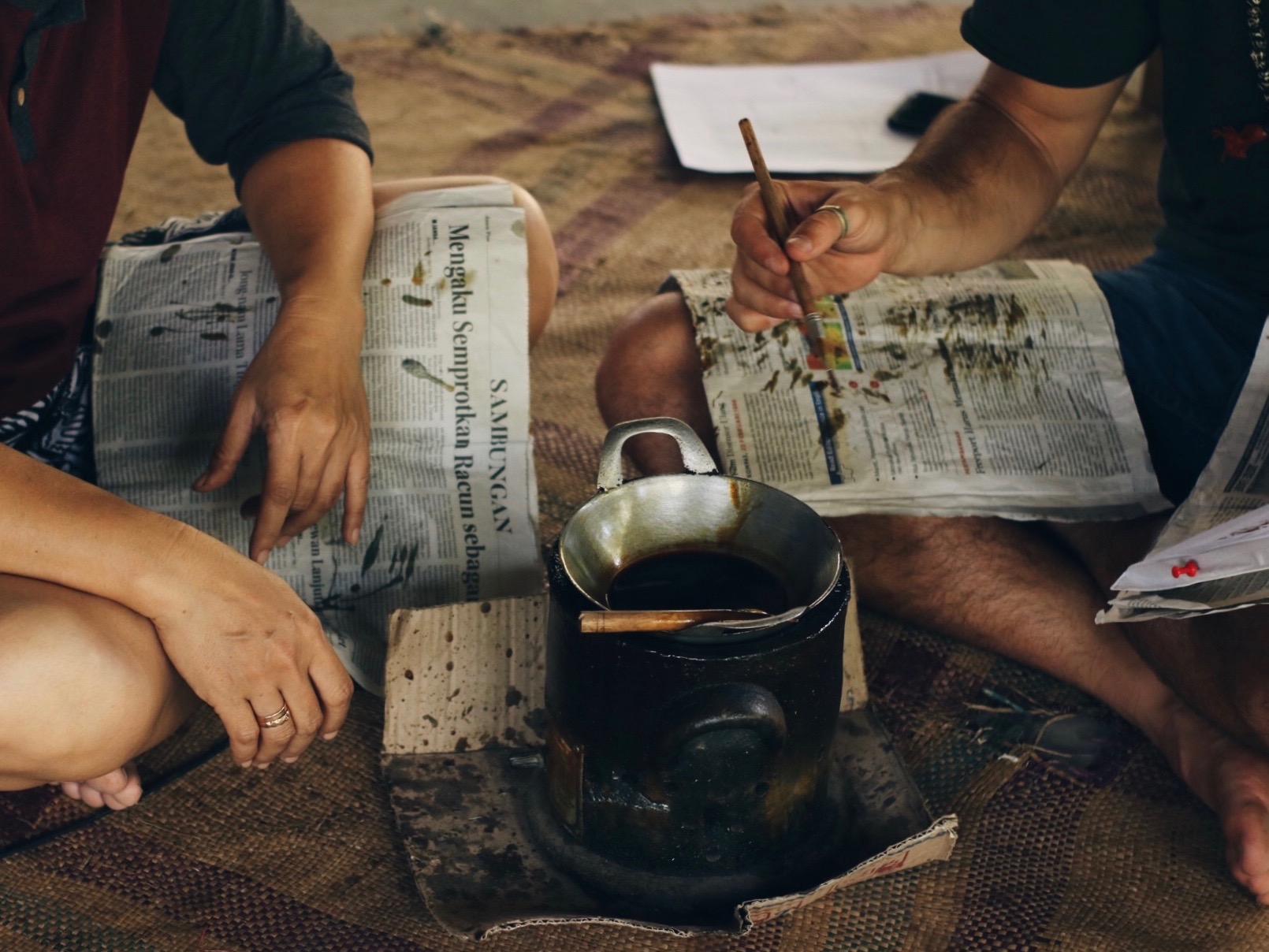
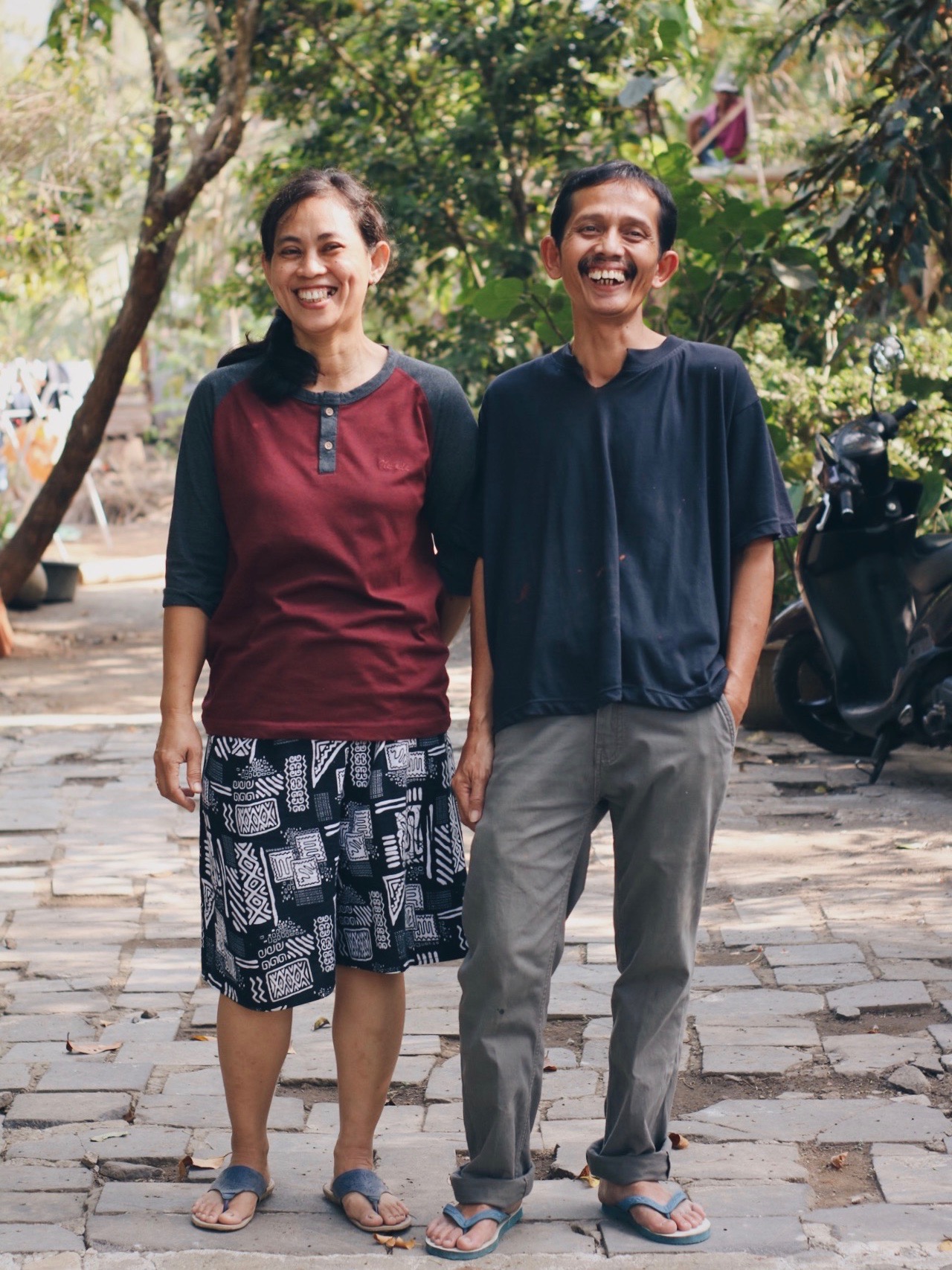
September 2018
The process of coloring clothes using fabric dyes and wax can be traced back to Ancient Egypt and has been observed in various civilizations throughout the centuries. This millenary art, though, found its highest expression in the island of Java, Indonesia, where the intricately designed batik cloths are synonymous with culture and tradition.
It is precisely here, in Java, that we are introduced to this fascinating technique.
Lumbini Batik House is a studio and gallery opened by Rita and her husband in their home in Borobudur. Rita herself is the queen of batik, responsible for the workshops and classes, while her husband, a painter, is the mind behind the unique designs.
They welcome us with a big heartfelt smile and show us around the gallery and their lovely garden, naming each fruit, bark, and leaf they use to produce the natural tints. Then, chosen our favorite design, it's time to try our hand at batik making. Rita explains how to use the canting, the traditional tool for the application of melted wax, to retrace the pencil outline and make it dye-resistant.
Several mistakes after, the cloth is ready for dyeing: the parts covered in wax endure the original color, while the rest of the fabric turns a delicate indigo blue. Obviously, this process of waxing and dyeing can be repeated infinite times to create more and more elaborate and colorful patterns, akin to paintings, but this time we are pretty happy with our blue hankie and stop here.
Thank you, Rita, for the kindness, the patience, and the excellent batik class of course!






